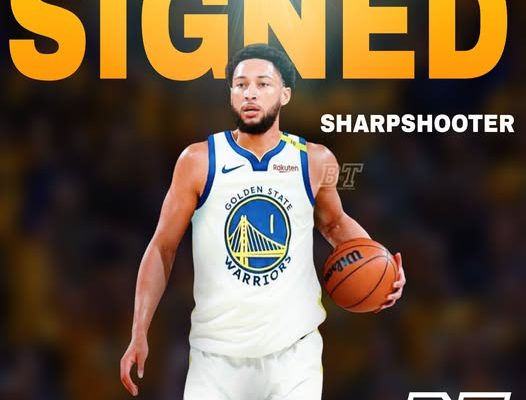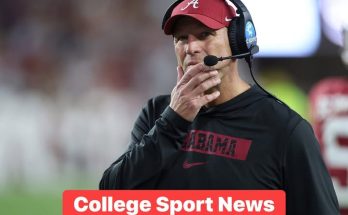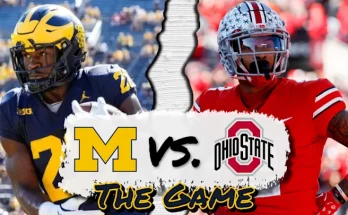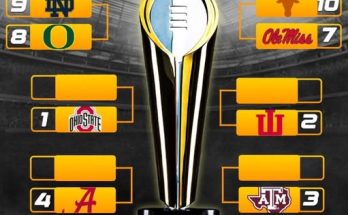In a move that has stunned much of the NBA world, Ben Simmons has officially inked a three-year contract with the Golden State Warriors. The agreement, which was finalized earlier this week, marks one of the most unexpected free-agent signings in recent memory and signals a potentially transformative chapter for both Simmons and the Warriors. After a tumultuous few seasons marred by injuries, mental health battles, and questions surrounding his fit in modern offensive schemes, Simmons now finds himself heading to a franchise known for its culture, stability, and championship pedigree.
This signing, while surprising, is not entirely without precedent. The Warriors have a long-standing history of reviving careers and maximizing unconventional talent. From turning Draymond Green into one of the most effective hybrid defenders of the past decade to transforming Andrew Wiggins into a defensive linchpin during their 2022 championship run, Golden State has demonstrated an uncanny ability to adapt players into their motion-heavy, team-first system. The front office and coaching staff, led by Bob Myers’ successor and head coach Steve Kerr, clearly see untapped potential in Simmons that they believe can be unlocked in the right environment.
Ben Simmons’ NBA journey has been anything but linear. Drafted first overall in 2016 by the Philadelphia 76ers, Simmons entered the league with sky-high expectations. His rare blend of size, athleticism, court vision, and defensive prowess made him one of the most intriguing prospects in recent memory. Early on, Simmons lived up to much of the hype. He won Rookie of the Year, made multiple All-Star appearances, and was consistently ranked among the best defenders in the league. However, his limitations as a shooter — particularly in the half-court and at the free-throw line — became glaring liabilities in the playoffs. The infamous 2021 postseason collapse, where Simmons passed up a wide-open dunk in Game 7 against Atlanta, became a turning point in both his career and public perception.
What followed was a drawn-out saga of trade requests, media scrutiny, and personal setbacks. After refusing to play for the Sixers and eventually being traded to the Brooklyn Nets for James Harden, Simmons continued to struggle with injuries and inconsistencies. His tenure in Brooklyn was characterized by flashes of defensive brilliance and transition play, but also long stretches of passivity, injuries, and diminished confidence. With each passing season, the once-dominant point forward became more of an enigma than a cornerstone. Many around the league began to doubt whether he would ever return to All-Star form — or even remain a viable starter on a contending team.
And yet, the Golden State Warriors have decided to take the gamble. This new three-year deal reportedly comes with a team-friendly structure, including performance incentives and a partial guarantee in the final season. Financially, it reflects a cautious but optimistic bet by the Warriors — one that hopes to capitalize on Simmons’ upside without compromising long-term flexibility. For Simmons, it’s a clean slate with an organization that not only understands how to develop talent but also fosters an unselfish, high-IQ style of play that aligns well with his strengths.
One of the most fascinating aspects of this move is how Simmons might fit into the Warriors’ existing system. Golden State’s offense, often dubbed “read-and-react,” is predicated on movement, screens, spacing, and decision-making. It’s not a coincidence that players like Andre Iguodala, Shaun Livingston, and Draymond Green — all of whom had unconventional skill sets — thrived in Kerr’s scheme. Simmons, with his elite passing, size, and court awareness, could theoretically slide into a similar role, particularly as a secondary ball-handler or point-forward in transition units.
Defensively, Simmons’ value is clearer. At 6’10” with elite lateral movement, he remains one of the few players in the league who can credibly guard all five positions. His ability to switch, help from the weak side, and crash the boards could make him a defensive anchor, especially when paired with Green, Wiggins, and Kevon Looney in various lineups. In fact, the Warriors could potentially field one of the most versatile and switchable defensive units in the league if Simmons regains his physical form.
Of course, all of this hinges on Simmons’ health and mentality. The biggest questions remain: Is he fully recovered from the lingering back and knee issues that plagued him in Brooklyn? Has he regained the confidence and aggression that once made him such a unique talent? The Warriors, known for their emphasis on sports science and player wellness, are reportedly taking a patient approach. Initial reports indicate that Simmons has already been working out with team trainers and participating in low-intensity scrimmages at the Chase Center.
There’s also a human element to this story that cannot be overlooked. For Simmons, this may be the last major opportunity to rewrite his narrative. He arrives in Golden State not as a franchise savior or a max-contract centerpiece, but as a reclamation project with a chance to contribute to a winning culture. That shift in expectations — from star to role player — could be liberating. Without the immense pressure that weighed on him in Philadelphia and Brooklyn, Simmons might rediscover the joy and flow that defined his early career.
For the Warriors, the move reflects a larger philosophical pivot. With their championship core aging and their young players still developing, Golden State is in a transitional phase. Steph Curry remains one of the greatest offensive engines in league history, but he turns 37 next season. Klay Thompson’s future is uncertain. Draymond Green is no longer in his athletic prime. The franchise is clearly trying to bridge the gap between eras — adding pieces that can help in the short term while not mortgaging the future. Simmons, if he pans out, could be a critical bridge between those timelines.
In basketball terms, Simmons could run the second unit offense, operate as a screener in split actions, or even play small-ball center in certain lineups. His ability to push the pace, make advanced reads, and defend multiple positions gives the Warriors new tactical flexibility. Importantly, he doesn’t need to shoot threes or create in isolation to be valuable in Kerr’s system — a fact that could reduce the mental pressure that has hampered him in the past.
Fan reaction has been predictably mixed. Some Warriors fans are excited by the prospect of adding a player with Simmons’ physical tools and defensive acumen. Others are skeptical, questioning his motor, durability, and offensive limitations. There’s also concern about his fit with Draymond Green, another non-shooter who thrives with the ball in his hands. However, it’s worth remembering that Golden State has made unusual pairings work before — largely due to the selfless nature of their stars and the intelligence of their coaching staff.
NBA analysts are similarly divided. Some view the move as a low-risk, high-reward swing that could pay major dividends come playoff time. Others see it as a desperation move by a team trying to squeeze a few more years out of its aging core. But what’s undeniable is that Simmons to the Warriors has re-ignited a conversation around one of the league’s most polarizing figures. It’s no longer a question of what Simmons was supposed to be — it’s now about what he still can become.
In the grander scheme of the NBA landscape, this move also sets off a ripple effect. If Simmons thrives in Golden State, it could serve as a blueprint for how other teams view so-called “broken” stars — players whose value is depressed but whose skill sets still hold promise in the right environment. The Warriors are betting on culture, continuity, and a system that emphasizes basketball IQ over traditional box score metrics. And if their gamble pays off, Simmons could emerge as one of the most compelling comeback stories in recent memory.
Only time will tell whether this partnership succeeds. But in an offseason filled with predictable extensions and expected trades, the signing of Ben Simmons by the Golden State Warriors stands out as a bold, imaginative move — one that could reshape not only the player’s trajectory but also the competitive balance of the Western Conference. For now, both Simmons and the Warriors embark on a shared journey — a pursuit of redemption, reinvention, and perhaps, one more ring.



